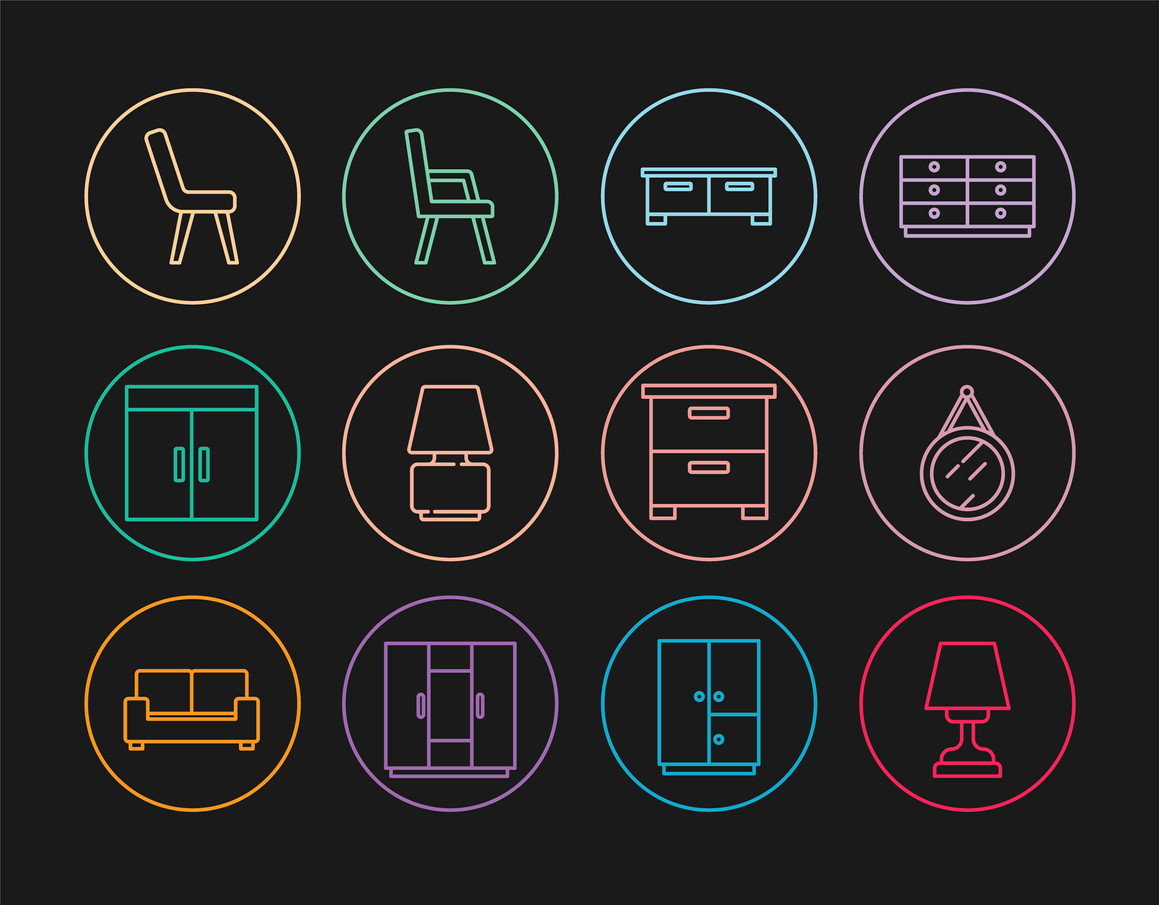
Direct-to-consumer (DTC) furniture companies have emerged as a popular alternative to traditional retailers, offering consumers greater convenience and seemingly endless options. However, with this rise in popularity comes a myriad of DTC furniture problems that warrant further examination.
In this blog post, we will delve into the evolution from wholesale retailers to DTC businesses and explore how visualization tools are shaping online furniture shopping experiences. Additionally, we will discuss high return rates and their environmental impact, including factors contributing to these issues and the increase in landfill waste due to disposable furniture.
Moreover, we’ll examine the prevalence of fake reviews influencing purchases within the industry and its financial consequences for consumers. Lastly, we will consider lowered expectations resulting from sight unseen shopping – specifically looking at consumer satisfaction trends – as well as make a case for DTC furniture accessibility by highlighting affordability advantages and growing interest in sustainable brands.
The Rise of Direct-to-Consumer Furniture

Thanks to e-commerce giants like Amazon, direct-to-consumer (DTC) furniture companies like Wayfair, Joybird, West Elm, Polly and Bark, Burrow, and Article are taking over the industry with competitive prices and incredible return policies.
Evolution from Wholesale Retailers to DTC Businesses
By cutting out intermediaries and offering lower prices directly to consumers, DTC businesses have disrupted traditional business models, forcing brick-and-mortar stores to adapt or close down.
Visualization Tools for Online Furniture Shopping
- Augmented Reality: IKEA’s mobile app uses AR technology to let users virtually place furniture items in their homes before making a purchase decision.
- 3D Room Planners: Many DTC brands offer interactive room planning tools that enable customers to design entire spaces using actual product dimensions and styles available on their websites.
- User-generated Content: Websites often showcase customer photos featuring purchased items in real-life settings, providing inspiration and assurance about how products will look once delivered.
Despite these advancements, DTC furniture companies still face challenges such as high return rates and environmental impact.
High Return Rates and Environmental Impact

Despite DTC furniture companies’ efforts to improve customer satisfaction, 15 to 40% of online orders still get returned due to inaccurate product descriptions, poor quality materials, or a mismatch between customer expectations and the actual product.
- Inaccurate product descriptions lead to unmet expectations.
- Poor quality materials cause dissatisfaction with the purchase.
- Mismatch between customers’ expectations and actual products received due to the sight unseen shopping experience.
High return rates not only affect consumers and retailers financially but also contribute to environmental concerns. TFRG observed a steep surge in the amount of household and furniture rubbish being thrown away, with an estimated 1.6 million tonnes sent to landfills across England during a single year.
- Growing consumer demand for fast fashion trends results in short-lived furniture pieces being discarded more frequently.
- Lack of recycling infrastructure or awareness among consumers leads to improper disposal of unwanted items.
Fake Reviews: The $152 Billion Problem
Trustworthy reviews are crucial when buying furniture online, but fake reviews have become a significant issue, costing customers an estimated $152 billion annually.
The Rise of Fake Reviews
Companies pay people to write positive reviews or create false accounts to boost ratings, making it hard for buyers to distinguish between genuine feedback and fabricated praise.
The Financial Consequences for Consumers
- Wasted money: Victims of fake reviews often spend money on subpar items that don’t live up to the hype.
- Lack of trust: Fraudulent endorsements harm both businesses and consumers, eroding trust in review systems.
- Returns & dissatisfaction: Misleading information from bogus reviewers leads to unsatisfied customers returning disappointing purchases.
Platforms like Amazon have implemented stricter guidelines and penalties against sellers found engaging in such practices, but the problem is likely to persist as long as financial incentives exist for faking opinions.
Source: BBC News
Lowered Expectations Due To Sight Unseen Shopping
According to Fast Company, sight unseen shopping has lowered consumer expectations for furniture purchases, leading to a willingness to accept flawed products rather than go through the hassle of returning them.
Impact of Sight Unseen Shopping on Consumer Satisfaction
- Lack of physical interaction: Customers struggle to assess quality and comfort without the ability to touch or feel products.
- Inaccurate colors and dimensions: Online images may not accurately represent true colors or sizes, leading to disappointment upon delivery.
- Misleading descriptions: Vague or misleading product descriptions can create unrealistic expectations.
Shift in Focus from Durability to Trends and Low Prices
This shift in consumer behavior has led to prioritizing fleeting trends and low prices over durability and timelessness, resulting in subpar furniture that doesn’t stand up well against wear-and-tear or changing tastes. To address these issues, DTC furniture companies must invest in better visualization tools like augmented reality and provide more accurate product information to ensure customer satisfaction.

The Case for DTC Furniture Accessibility
Despite the problems associated with DTC furniture, it makes furniture more available to a wider range of consumers.
Online retailers offer cheaper products and easier access than traditional brick-and-mortar stores. Brands like Wayfair, Joybird, West Elm, and others offer competitive pricing on stylish designs. Customers can find affordable options without sacrificing quality or aesthetics. Individuals who may not live near a physical store location can easily browse through thousands of options at their fingertips.
Sustainable furniture brands such as Medley Home or Simbly focus on using eco-friendly materials while minimizing waste during production. Companies like Floyd emphasize durability by designing modular pieces that adapt over time as needs change – reducing overall consumption. Eco-conscious shoppers appreciate transparency regarding manufacturing processes, making them more likely to support businesses prioritizing environmental responsibility.
DTC furniture companies provide a viable solution for consumers seeking affordable, accessible, and sustainable options in this era where convenience reigns supreme alongside growing concerns about our planet’s health.
FAQs in Relation to DTC Furniture Problems
What is a DTC brand?
A Direct-to-Consumer (DTC) brand sells its products or services directly to consumers without involving traditional retailers or wholesalers, allowing for greater control over product development, marketing strategies, customer relationships, and profit margins.
Is Ikea a DTC brand?
Ikea is a DTC (Direct-to-Consumer) brand that sells its products directly to customers through its stores and online platform, allowing for better control over pricing and customer experience.
What makes DTC brands successful?
DTC brands succeed by offering unique products, competitive pricing, convenience through online shopping, personalized marketing, strong social media presence, and prioritizing sustainability and quality.
How to build a DTC brand?
- Create unique products or services that cater to specific consumer needs.
- Develop an easy-to-use e-commerce platform.
- Prioritize digital marketing efforts targeting your ideal audience.
- Incorporate personalization into customer interactions.
- Maintain active social media accounts for engagement and feedback collection.
DTC Furniture: Conclusion

The Downside of Direct-to-Consumer Furniture
Direct-to-consumer furniture may seem like a dream come true, but it’s not all sunshine and rainbows.
With sight unseen shopping, high return rates and fake reviews, customer satisfaction can take a hit.
And let’s not forget about the environmental impact of disposable furniture, which contributes to landfill waste.
But there is hope! Sustainable DTC brands are emerging, prioritizing durability over trends and low prices.
As the industry evolves, it’s crucial for retailers to address these issues and provide transparent information for consumers.
